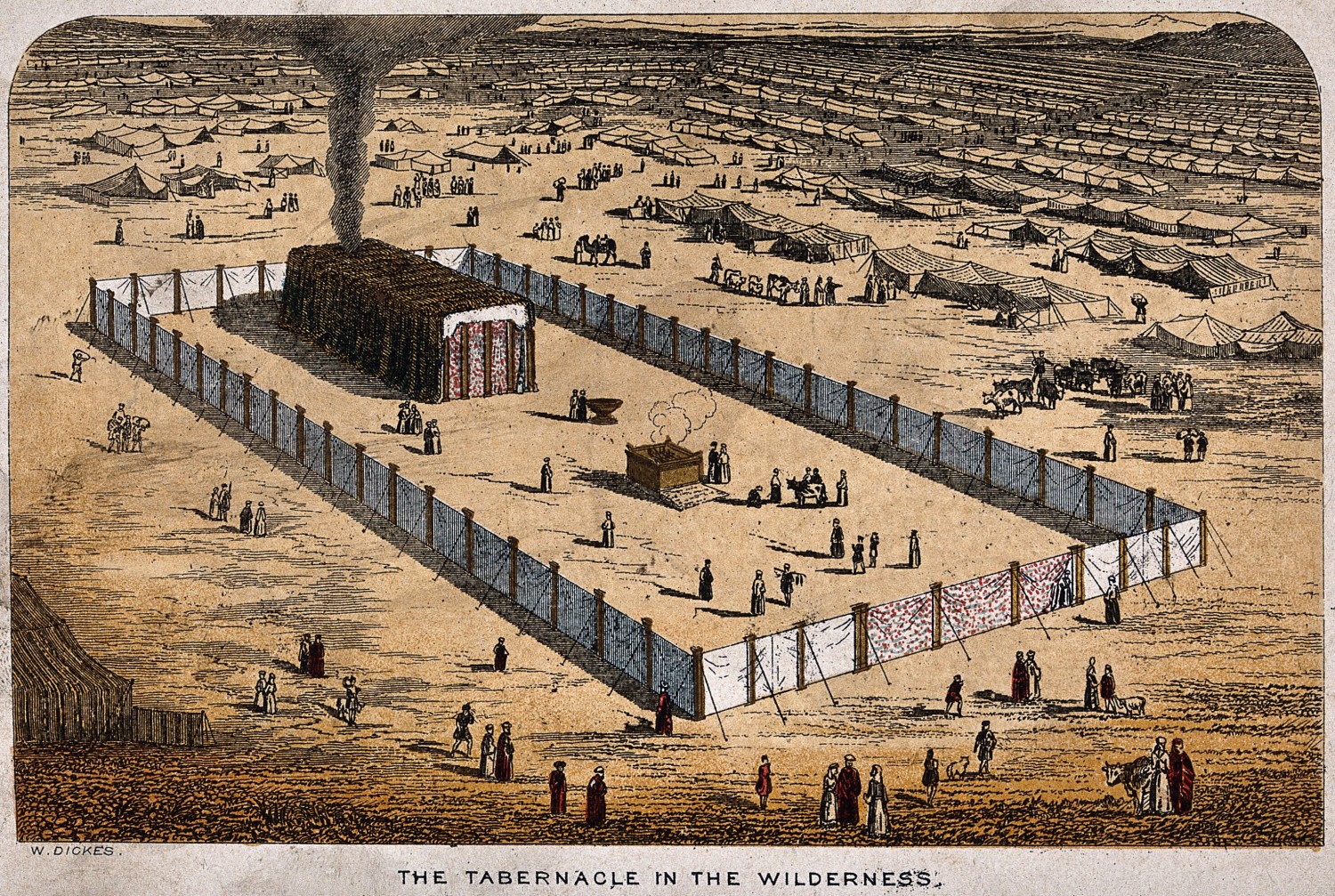The author of Hebrews tells his readers that the first covenant had rules and regulations for the worship of God that were of Divine origin. The holy dwelling place of that covenant (the sanctuary) was a material one made with hands. "Sanctuary" refers to the tabernacle as a whole. The first room the High Priest would pass through on his way to the Holy of Holies would be the Holy Place. It was the east room of the tabernacle. On its south side stood the lampstand covered with gold (Exodus 25:31-40). On the north side was the table of shewbread (Exodus 25:23-30). The shewbread was made of fine flour and baked into twelve cakes, representing the twelve tribes (Leviticus 24:5-9). They were placed in two rows on the table every sabbath and the old loaves were eaten by the priests (Hebrews 9:1-2).
The first veil covered the doorway, while the second divided the Holy Place and Most Holy (Exodus 26:36-37, 31-34). The Most Holy contained the golden censer (Leviticus 16:12) and the ark of the covenant (Exodus 25:10-16). Inside the ark was a golden pot containing an omerful of manna (Exodus 16:31-34), Aaron’s rod that had budded (Numbers 17:1-11), and the two tables of the covenant (Exodus 25:16; Deuteronomy 10:1-5). Only the tables of stone were left in the time of Solomon (1 Kings 8:9). On the ark was a cover which was called the mercy seat (Hebrews 9:3-5; Numbers 7:89).
"The protective wings of the two cherubim provided the place where, symbolically speaking, God dwelled among his people (Psalm 80:1; 99:1)" (Lightfoot, p. 165).
Having finished this brief description of the tabernacle and its furniture, the writer began to tell about some of the things done there. There were daily ministerings in the Holy Place (Exodus 27:21; 30:7-8). The Most Holy Place was entered only on one day during the year and then only by the High Priest. He performed the duties listed in Leviticus 16. His main purpose was to offer a sacrifice for the unwitting and ignorant sins of the people and himself (Numbers 15). All these things were done by and through the direction of the Holy Spirit "indicating," in order to make plain, that the way into the Most Holy Place was not yet opened to man. Such should have caused anticipation of the new covenant which was designed by God to open the way. It was only after Christ had died, nailing the old covenant to the cross, that the way was made clear (Hebrews 9:6-8).
The sacrifices of the tabernacle were symbolic. It would seem that the tabernacle and worship system of the Jewish people is compared to the Holy Place of the tabernacle. The world had to go through this period of Jewish history in order to reach the Christian age and the way to heaven, represented by the Most Holy Place. The old law leads to the new and not until the old law is gone can one reach the new. Sacrifices and gifts were offered under that system, but perfection could not be obtained until the new went into effect.
"The Levitical code contained many instructions with reference to clean and unclean foods (Leviticus 11; Deuteronomy 14:3-21). There were also laws as to drink (Leviticus 10:9; Numbers 6:2-3). There were numerous laws on washings. There were washings for the high priest (Leviticus 16:4, 24), washings for the priests (Exodus 30:18-21; Leviticus 8:6), washing for the Levites (Numbers 8:6-7), washings for lepers and unclean persons (Leviticus 14:8-9; Numbers 19), and washings of garments and vessels (Leviticus 6:27-28)" (Lightfoot, p. 168).
Despite all these outward washings, no one was made inwardly clean. These external laws were in effect until the "time of reformation." Jesus said there would be a new age and he would bring about a regeneration. Thus, we are forgiven of our sins when we are regenerated, or born again (Hebrews 9:9-10; Colossians 1:13-14).
- Heaven as an inheritance - 2025-12-11
- A letter to the scattered elect - 2025-12-04
- Peter, a man like me? - 2025-11-20
